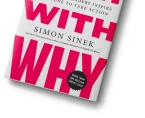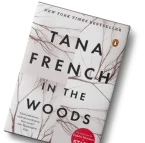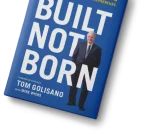
Dreaming of crafting unforgettable love stories? If you’ve always wanted to learn how to write a romance novel or are just exploring how to write a romance book that truly connects with readers, you’re in the right place.
Romance is more than just hearts and flowers—it’s about emotional journeys, irresistible chemistry, and characters readers can root for. But starting can feel overwhelming: How do you build romantic tension? What makes a compelling hero or heroine? And how do you structure a romance story that delivers a satisfying happily-ever-after?
In this in-depth guide, we’ll walk you through everything you need to know to write a romance novel that sells. From choosing the right subgenre to crafting swoon-worthy scenes and editing like a pro, you’ll discover step-by-step strategies used by successful romance authors. Plus, learn how expert help from Estorytellers can turn your love story into a market-ready book.
Dreaming of Writing a Romance Novel?
We help you craft heartwarming stories with structure, emotion, and publish-ready flow.
Start Writing NowSubgenres of Romance Novels
Each subgenre appeals to different audiences, so knowing your niche helps tailor your story and reach the right readers.
| Subgenre | Popular Themes & Elements |
|---|---|
| Contemporary Romance | Regency or Victorian era, class differences, corsets, and chivalry. Ex: Julia Quinn’s Bridgerton. |
| Historical Romance | Regency or Victorian era, class differences, corsets and chivalry. Ex: Julia Quinn’s Bridgerton. |
| Paranormal Romance | Vampires, witches, immortals, with elements of danger and destiny. Like Twilight or A Discovery of Witches. |
| Romantic Suspense | Love stories interwoven with crimes, mysteries, or espionage. Fast-paced with danger and emotional depth. |
| LGBTQ+ Romance | Explores relationships beyond heteronormative norms, with diverse representation and universal emotion. |
Key Tropes Readers Love
Tropes provide emotional shortcuts. Readers come to romance expecting a satisfying emotional arc, and familiar tropes deliver that comfort.
- Enemies to Lovers: Tension, banter, and fiery chemistry.
- Second Chance Romance: Reuniting with a past flame brings nostalgia and growth.
- Fake Dating: Pretending leads to real feelings and hilarious complications.
- Friends to Lovers: Slow-burn tension built on trust and affection.
- Forbidden Love: High emotional stakes when love isn’t allowed—by family, society, or circumstance.
Want Someone to Write It For You?
Hire our romance ghostwriters to bring your characters and plot to life with emotion and elegance.
Hire a GhostwriterWhy Write a Romance Book?
The Emotional Connection with Readers
Unlike other genres, romance is deeply emotional. Readers develop strong attachments to characters and crave the emotional rollercoaster of falling in love. This connection is what turns casual readers into lifelong fans.
Market Demand & Opportunities
Romance is a billion-dollar industry with a global reach. The genre thrives in both traditional and self-publishing. Romance authors have robust fan bases on social platforms like TikTok (#BookTok), Goodreads, and Facebook groups. With such a vast readership, success is possible with consistency and quality storytelling.
Getting Inspired: Where Great Romance Novels Begin
Inspiration can be found everywhere—you just need to know where to look.
Real-life Experiences and Fantasies
Your own romantic experiences, heartbreaks, or idealized visions of love can be powerful story seeds. Tap into universal emotions like longing, jealousy, or healing.
Books, Movies, and Media Inspiration
Watch Pride and Prejudice, Outlander, The Notebook, or To All the Boys I’ve Loved Before. Take notes on emotional pacing, character arcs, and dialogue. Think critically—what drew you in? What felt cliché?
Pro Tip: Use Pinterest or mood boards to visualize your characters and setting.
Developing Compelling Characters
Creating a Relatable Heroine
Your heroine doesn’t need to be perfect. In fact, flaws make her real. Whether she’s a single mom, a workaholic, or healing from betrayal, her growth arc should drive the story.
- Give her agency: She makes choices that influence the plot.
- Avoid stereotypes: She’s not just a damsel or caretaker—give her dreams, fears, and quirks.
Crafting a Swoon-worthy Hero
He could be a grumpy CEO or a sweet small-town vet. What matters is emotional depth. Make readers fall for him through:
- Vulnerability: Hidden wounds or fears.
- Respect: He supports the heroine’s growth.
- Transformation: He learns from love, not just conquers it.
The Importance of Chemistry
Show attraction through banter, body language, and subtext. Let readers feel the tension, not just be told about it.
Struggling With Romance Plot Structure?
Our experts help shape your romantic arc, conflict, and emotional payoff for maximum reader impact.
Fix My PlotBuilding Romantic Conflict
Conflict deepens your story. Without it, the romance feels flat or rushed.
Internal Conflict
These stem from characters’ insecurities or past trauma:
- “I’m not good enough.”
- “Love makes you weak.”
- “What if I lose them?”
External Conflict
Outside forces create pressure:
- Family disapproval
- Cultural barriers
- Workplace dynamics
- Long distance
Balance both to keep your story layered.
Misunderstandings, Secrets, and Tension
Use these with care—don’t rely solely on miscommunication. Secrets should have emotional consequences, not just be plot twists.
Ready to Publish Your Romance Novel?
From editing to Amazon listing, we provide complete publishing support for romance authors.
Get Published TodayStructuring Your Romance Novel
The Three-Act Structure
Each act should serve a clear purpose:
- Act One – Setup
- Introduce characters, goals, and the initial spark.
- End with an inciting incident (e.g., fake date agreement, unexpected kiss).
- Act Two – Confrontation
- Relationship develops amidst tension and obstacles.
- Includes the “falling in love” and midpoint twist.
- Act Three – Resolution
- The “dark night” moment (breakup or climax).
- Ends with grand gesture and emotional payoff.
Essential Romance Beats
Following a beat sheet like Romancing the Beat helps maintain rhythm. A few key beats:
- Setup: Who they are, why they’re stuck.
- Meet-cute: First interaction.
- Deepening connection: Intimate moments.
- Crisis: Emotional rupture.
- Climax: Decision or confession.
- Resolution: Reunited, stronger than before.
Common Romance Plot Templates
- Marriage of Convenience: They marry for practical reasons—but fall in love for real.
- Secret Billionaire: Hidden identity and class tension.
- Road Trip Romance: Forced proximity and character bonding.
Want Readers to Fall in Love with Your Book?
We promote romance novels with genre-specific marketing strategies to help you find your audience.
Market My Romance BookWriting the Perfect Meet-Cute
The meet-cute is the first moment your romantic leads interact—and it sets the tone for their entire relationship. It should be memorable, unique, and laced with either immediate sparks or undeniable tension.
What Makes It Memorable
- Conflict or Comedy: Add a dash of embarrassment or irritation. Think: spilling coffee on a laptop or arguing over the last parking spot.
- Unexpected Situations: Set them up in an unusual scenario—lost in a museum, mistaken identity at a wedding, or stuck in an elevator.
- Emotional Connection: Even if they clash, hint at something deeper. Maybe they’re both escaping something or share a mutual vulnerability.
Meet-Cute Ideas by Subgenre
| Subgenre | Meet-Cute Idea |
|---|---|
| Contemporary | They match on a dating app but realize they already know each other in real life. |
| Historical | She saves him from a duel—or vice versa. |
| Paranormal | She crashes her car into his… except he’s a werewolf. |
| Romantic Comedy | He’s her boss’s brother—and her new roommate. |
| Second Chance | She’s a wedding planner; he’s the groom’s best man—who broke her heart in high school. |
Deepening the Relationship
Once they’ve met, the next task is building intimacy organically. Readers need to feel the relationship evolve.
Show, Don’t Tell Emotions
Instead of saying “She felt safe with him,” show it:
“As he placed the steaming mug in her hands, his fingers brushed hers—warm, steady. Her heartbeat slowed.”
Use actions and sensory details to evoke emotional beats—eye contact, hesitation before a touch, or moments of shared silence.
Creating Intimacy Without Rushing
Balance is key. Don’t jump into physical or emotional declarations too soon. Give them:
- Shared goals or challenges
- Deep, vulnerable conversations
- Repeated moments of trust
Small gestures—a character remembering her coffee order or defending him in public—often do more than passionate kisses.
Need Help With Dialogue, Tropes & Pacing?
Our editors and writing coaches share proven romance writing techniques to elevate your manuscript.
Talk to a CoachWriting Emotionally Charged Scenes
These scenes are where romance comes alive. Whether it’s a confession, an argument, or a first kiss, emotional weight matters more than action.
Dialogue that Sparks Chemistry
Great romantic dialogue:
- Is layered: What they say vs. what they mean.
- Is dynamic: Includes interruptions, silence, emotional hesitations.
- Pushes the story forward: Every line should change the dynamic.
Example:
“You make me nervous,” she admitted.
“Good,” he said. “Because you’ve been making me crazy since day one.”Free Guide: How to Write a Fiction Novel: From Concept to Completion
Body Language and Subtext
Let actions speak:
- He clenches his jaw when someone flirts with her.
- She touches the locket around her neck when nervous.
- A long pause before answering, a lingering look—all build tension.
Pacing Your Romance Book
A well-paced romance gives readers time to fall in love with the characters and their journey.
Avoiding Info Dumps
Start in the action. Show the character in motion, reacting, struggling—don’t begin with pages of backstory.
Instead:
- Weave background into dialogue.
- Reveal through flashbacks or character thoughts.
When to Build Tension vs. When to Release
Think of pacing like a rollercoaster:
- Build tension during flirtation, miscommunication, or danger.
- Release tension with emotional revelations, intimate moments, or resolutions.
Alternate between light and heavy scenes to maintain balance and avoid fatigue.
Want to Turn Your Romance into a Bestseller?
We guide you in writing romance fiction that attracts readers and generates real book sales.
Start My BookWriting Satisfying Endings
A romance novel’s ending should never disappoint. It’s your final emotional payoff.
HEA vs. HFN: What’s Best for You?
- HEA (Happily Ever After): The couple ends up together, with a clear future—ideal for classic readers.
- HFN (Happy for Now): The couple is happy and committed, but future events are left open.
Choose based on your audience and tone. Readers of cozy romance prefer HEA. More realistic or literary romance may lean toward HFN.
Epilogues and Closure
A great epilogue:
- Shows long-term payoff (wedding, baby, business together).
- Reaffirms character growth.
- Wraps up any loose ends.
Keep it short and emotional, not an extra chapter.
Editing and Revising Your Romance Novel
Even bestselling authors revise extensively. The first draft captures ideas; editing refines the art.
Self-Editing Checklist
| Area | Questions to Ask |
|---|---|
| Characters | Do they evolve emotionally? Are they believable? |
| Conflict | Is it clear, sustained, and resolved naturally? |
| Dialogue | Does it sound real? Is it too “on-the-nose”? |
| Scenes | Is each scene necessary and contributing to plot or emotion? |
| Language | Is the tone consistent? Are there passive constructions or weak verbs? |
Getting Feedback from Beta Readers
Find readers who:
- Are fans of your subgenre.
- Give constructive, honest feedback.
- Can point out pacing, plot holes, or flat characters.
You can also hire professional editors, or work with a ghostwriting agency like Estorytellers, who offer complete writing, editing, and publishing solutions.
Not Sure Where to Start Your Love Story?
We help first-time romance authors build their story step-by-step — from idea to completed book.
Get Help WritingPublishing Options for Romance Authors
There’s no single path to success, but plenty of viable options.
Traditional vs. Self-Publishing
| Criteria | Traditional Publishing | Self-Publishing |
|---|---|---|
| Control | Publisher makes final decisions | Full creative control |
| Timeline | 1-2 years from acceptance | Weeks to months |
| Distribution | Bookstores, libraries | Amazon, Kindle Unlimited, print-on-demand |
| Royalty Rate | 5–15% | 35–70% |
| Marketing Support | Limited unless you’re a big name | Entirely your responsibility |
Romance-Specific Publishers
Here are a few reputable publishers to consider:
- Harlequin – Traditional powerhouse, especially for category romance.
- Entangled Publish – Modern, edgy romance across subgenres.
- Sourcebooks Casablanca – Accepts unagented submissions with a focus on commercial appeal.
Having Trouble Conveying Emotion?
Our editors help you deepen emotional arcs, create memorable moments, and keep readers hooked.
Enhance My StoryRomance Novel Marketing 101
You’ve written a great book. Now what? You must market your book to ensure it reaches the right readers and brings you the revenue you deserve.
Building a Brand as a Romance Author
Create a strong author identity:
- Choose a pen name, genre niche, and visual branding.
- Have a professional website and author bio.
- Build a mailing list and give away a free story.
Leveraging Social Media & Reader Groups
Use platforms like:
- Facebook: Romance reader groups are active and loyal.
- Instagram: Post aesthetic reels, character art, mood boards.
- TikTok: #BookTok has launched many indie romance bestsellers.
Pro Tip: Run a BookFunnel giveaway or join romance-themed anthologies to increase visibility.
Tools and Resources for Romance Writers
Writing Software and Plotting Tools
| Tool | Use |
|---|---|
| Scrivener | Organizing complex manuscripts |
| Grammarly | Grammar checking and tone detection |
| Plottr | Beat sheets and visual plotting |
| Atticus | Writing and formatting in one platform |
Recommended Books and Communities
- Romancing the Beat by Gwen Hayes – Must-read for romance plot structure.
- Save the Cat! Writes a Novel by Jessica Brody – Applicable across genres.
- Reddit’s r/romancewriters – Active forum for feedback and resources.
- Scribophile – Critique community for aspiring authors.
How Estorytellers Can Help You Succeed
Writing a romance novel takes time, skill, and commitment. If you’re feeling overwhelmed or stuck, Estorytellers can help.
Why Hire a Professional Ghostwriting Agency
Whether you’ve started writing or just have an idea, Estorytellers offers:
- Experienced romance ghostwriters who know emotional pacing, character chemistry, and subgenre expectations.
- Full-service support from concept to publishing, including editing and formatting.
- Confidentiality and ownership, so the book is truly yours.
What Estorytellers Offers Aspiring Romance Authors
- Custom-written romance novels with engaging plots.
- Professional editing and proofreading.
- Guidance on self-publishing, cover design, and Amazon KDP.
Just Have an Idea for a Romance Novel?
From plot development to final draft, we help bring your love story to life with professional guidance.
Bring It to LifeConclusion:
Writing a romance novel isn’t just about storytelling—it’s about capturing emotion, exploring vulnerability, and bringing characters to life in a way that resonates with readers around the world.
Whether you dream of penning a swoon-worthy billionaire love story, a spicy enemies-to-lovers slow burn, or a soulmate reunion across lifetimes, the path to becoming a romance author is absolutely within your reach. Start with your heart. Write with intention and finish with feeling.
And if you’re ever overwhelmed by structure, pacing, or polish, Estorytellers is here to help. Their expert ghostwriters, editors, and publishing support specialists can turn your vision into a finished, market-ready romance novel without compromising your voice or originality.






























